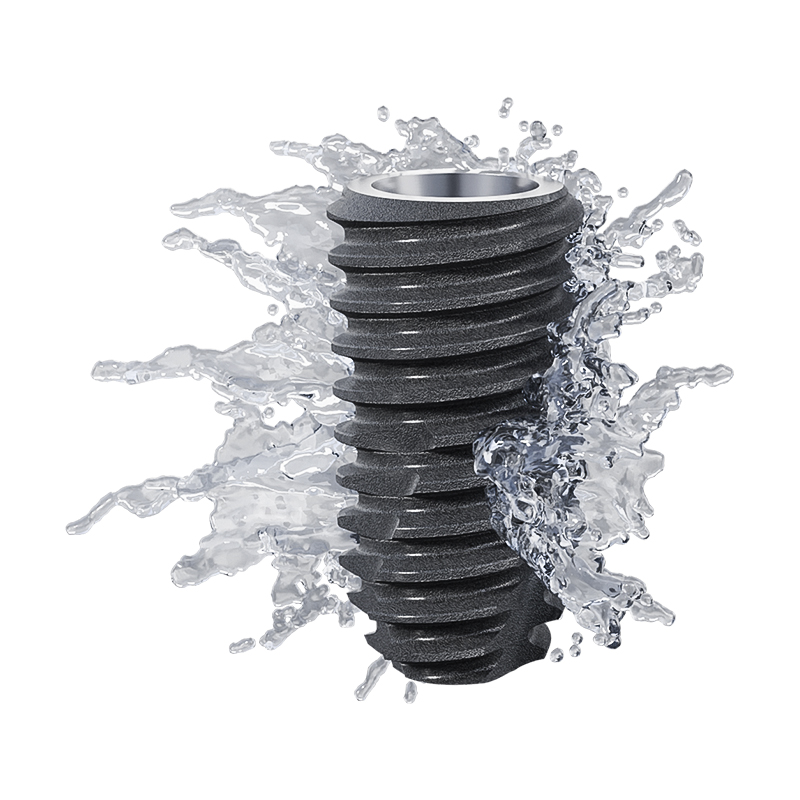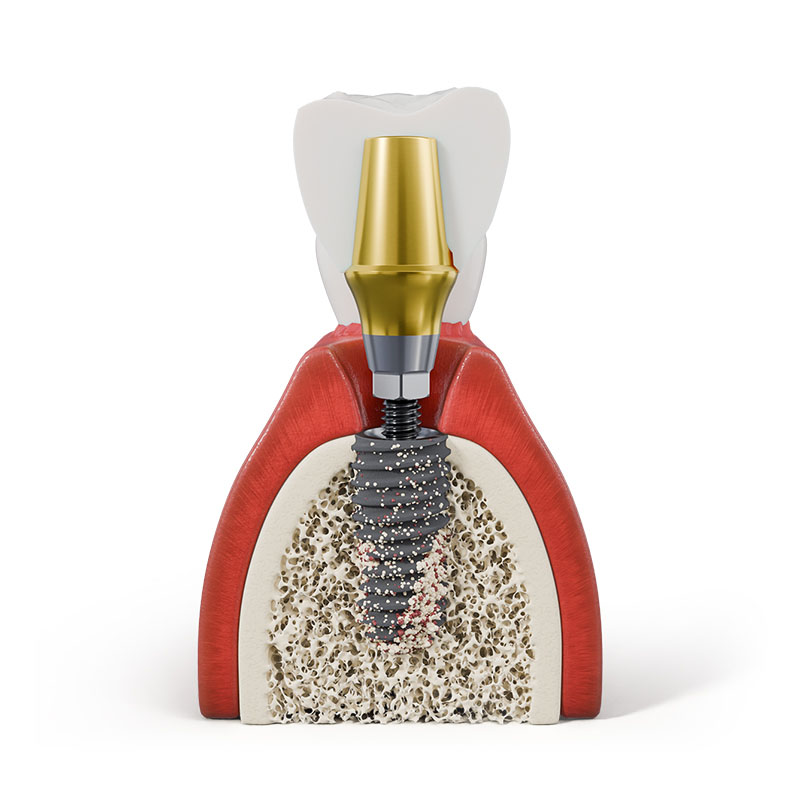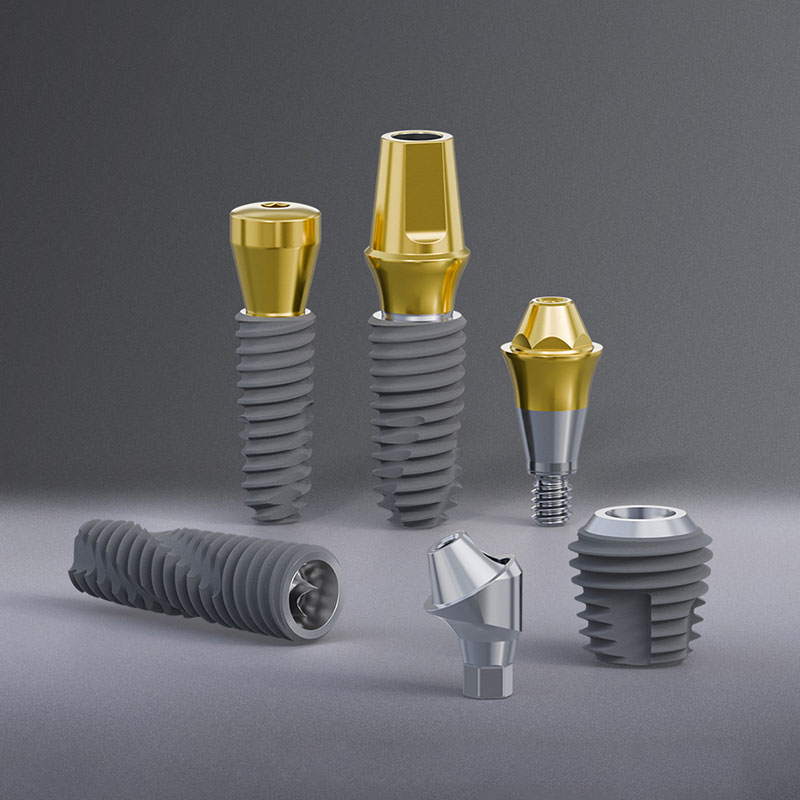How Does Nano-Porous Tantalum Coating Enhance Osseointegration in Zirconia Implants?
Our osseointegrated implant system integrates nano-porous tantalum coatings on zirconia surfaces, achieving 40% faster bone-to-implant contact compared to traditional zirconia. Key innovations include:
30nm Nanopore Optimization: Creates a scaffold-like structure for osteoblast adhesion, increasing surface area by 10% for accelerated osseointegration.
Galvanic Corrosion Resistance: Eliminates metal ion release risks, ideal for patients with titanium allergies.
Hydrothermal Stability: Maintains structural integrity under oral pH variations (4.5-7.5), critical for long-term Osseointegrated Implant success.

What Role Does Sympathetic Nerve Stimulation Play in Accelerating Osseointegrated Implant Healing?
Our protocol enhances osseointegrated implant osseointegration through targeted electrical stimulation:
Microelectrode Activation: 7-day post-op infraorbital nerve stimulation increases bone mineralization density by 28%.
Bilateral Osteogenesis: Evokes synchronized bone remodeling in both jaw quadrants, reducing healing time from 12 to 8 weeks.
Anti-Resorption Effect: Reduces peri-implant bone loss by 35% in diabetic patients (HbA1c ≤9%).

How Does Surface Topography Influence Osseointegrated Implant Success Rates?
Our technology redefines osseointegrated implant performance through:
- Dual Acid-Etched Microgrooves: 50-100μm grooves align collagen fibers, improving primary stability by 45%.
- Sandblasted Macrotexture: 150-200μm roughness enhances blood clot retention, accelerating woven bone formation.
- Hydrophilic S.L.A Pro Coating: Reduces fibrous tissue formation by 78% through rapid protein adsorption.

Why Are Angled Multi-Unit Abutments Critical for Full-Arch Osseointegrated Implant Restorations?
Our 30° abutments optimize osseointegrated implant biomechanics in atrophic jaws:
Sinus/Nerve Avoidance: Enables 45° zygomatic implant trajectories with <15° prosthetic axis correction.
Stress Distribution: Reduces cortical bone strain by 32% through tapered thread designs.
IoT-Enabled Monitoring: Smart abutments detect micromovement (0.02Ncm sensitivity) during immediate loading.
How Does AI-Driven CBCT Analysis Predict Osseointegrated Implant Success in Osteoporotic Patients?
Our platform elevates osseointegrated implant planning through:
Bone Density Mapping: Identifies >85% viable sites in D3/D4 bone, reducing graft requirements by 60%.
Autophagy Modulation: Predicts MSC differentiation patterns to optimize surface treatments for low BMD cases.
3D Finite Element Modeling: Simulates chewing forces (200-700N) to prevent stress shielding-induced resorption.
Innovation Highlights
14 Surface Treatment Patents: From nano-porous tantalum to nerve stimulation protocols
Free Digital Workflow: Includes AI-powered CBCT analysis tools
FDA/CE/MDR Certified: 0.1μm surface roughness tolerance
Media Contact
Company Name: Zhejiang Trusyou Medical Instruments Co., Ltd.
Email: Send Email
Phone: +86 15158460117
Country: China
Website: https://www.trusyou.com/






